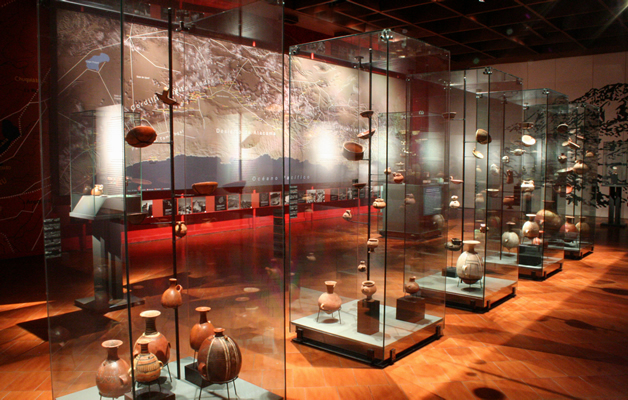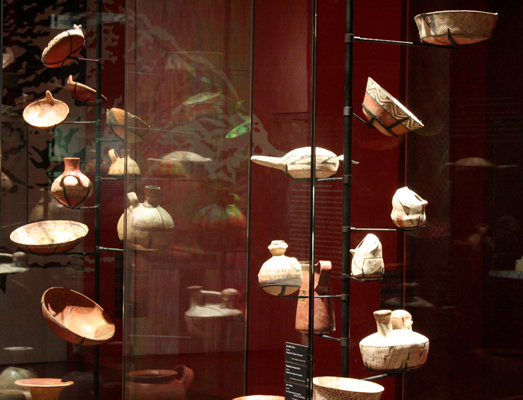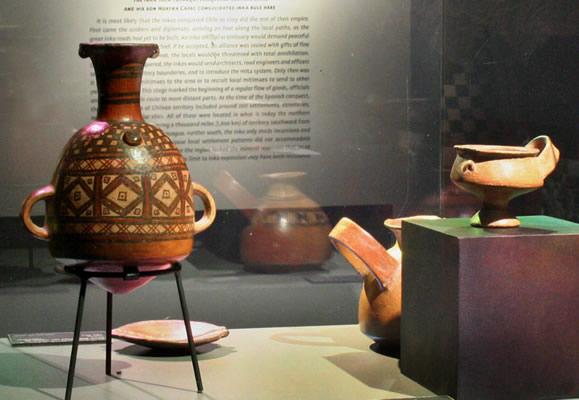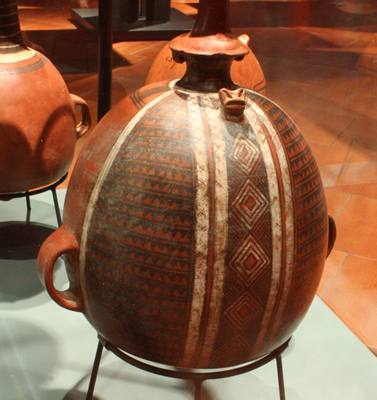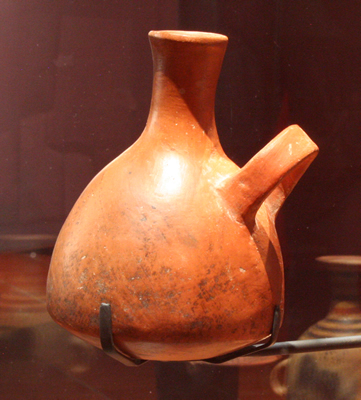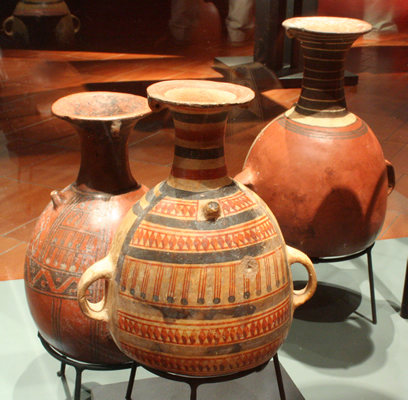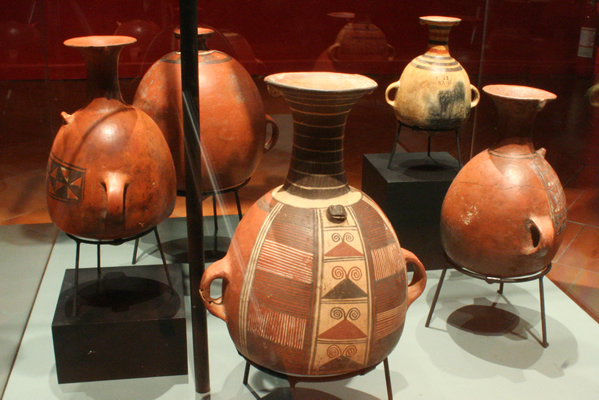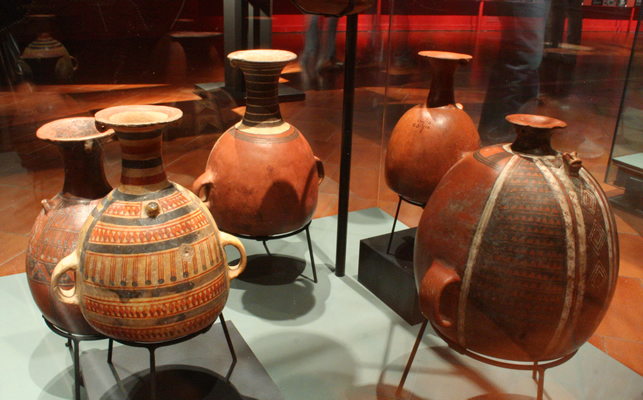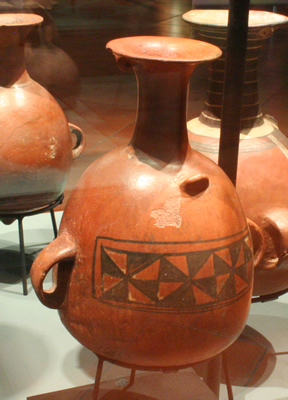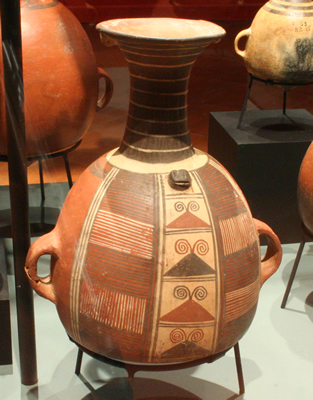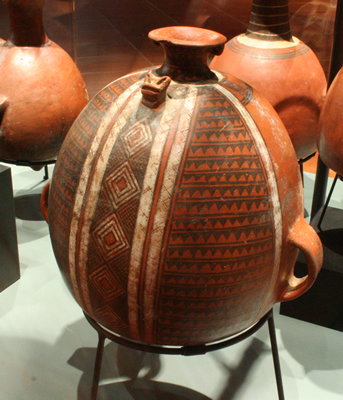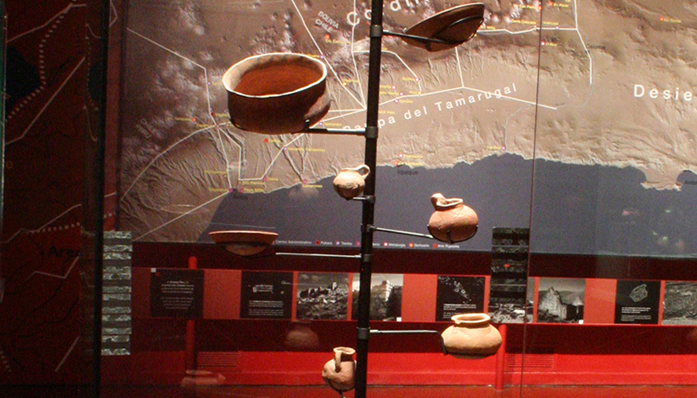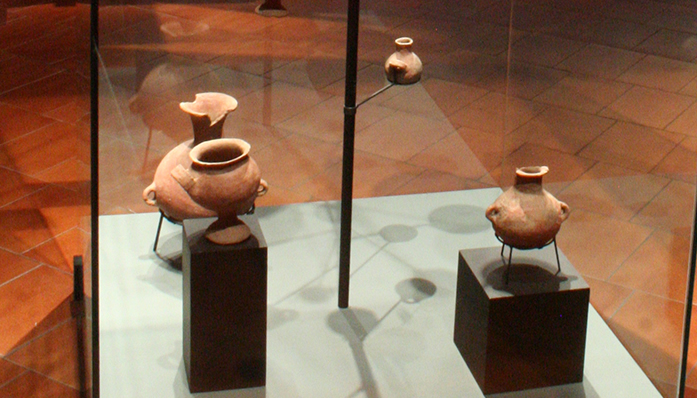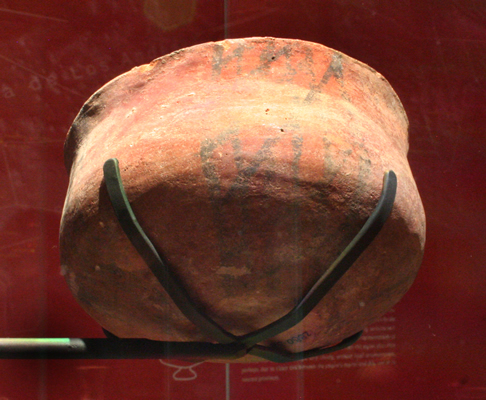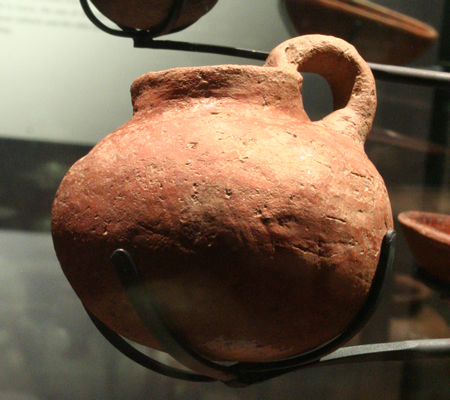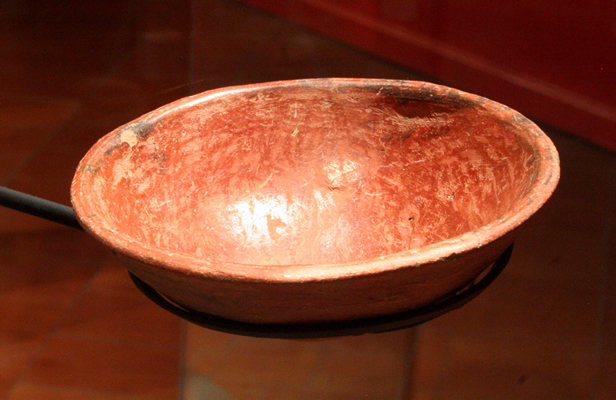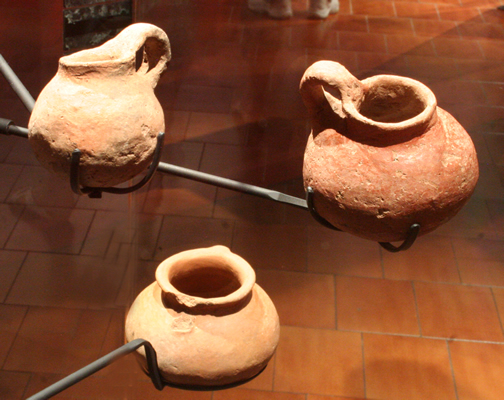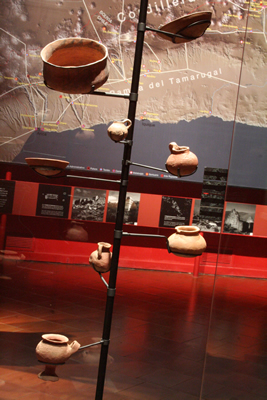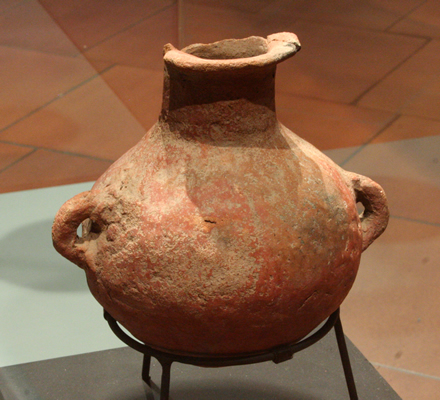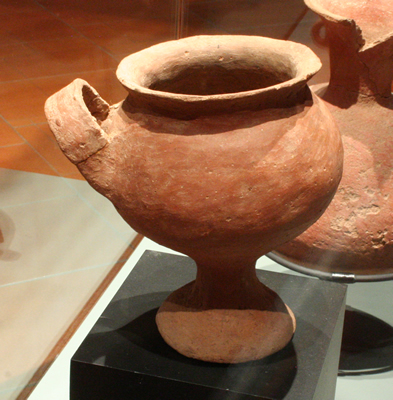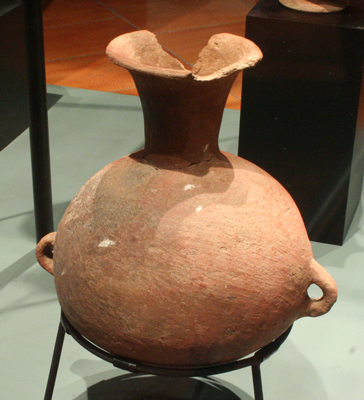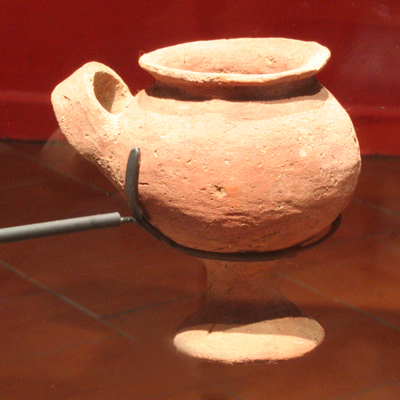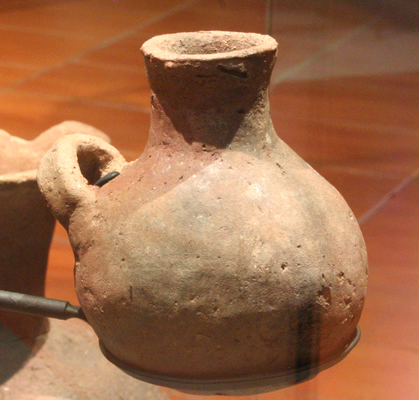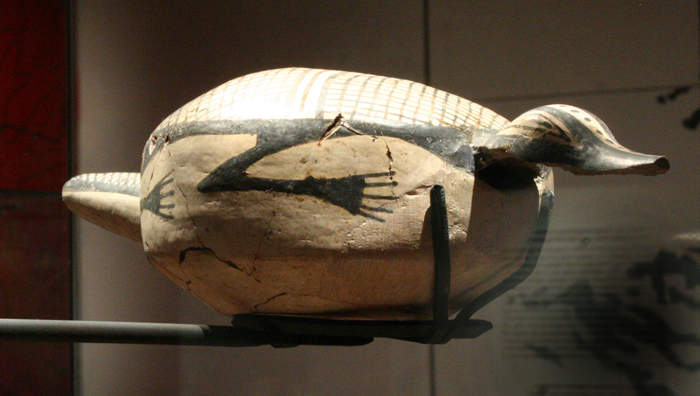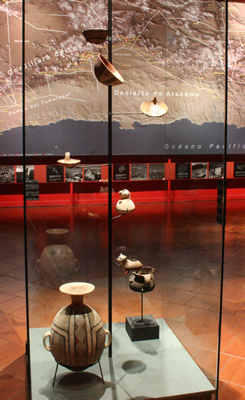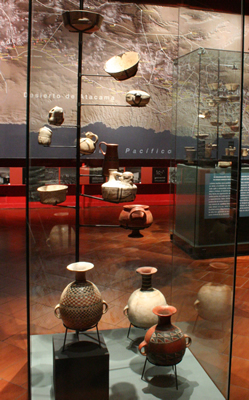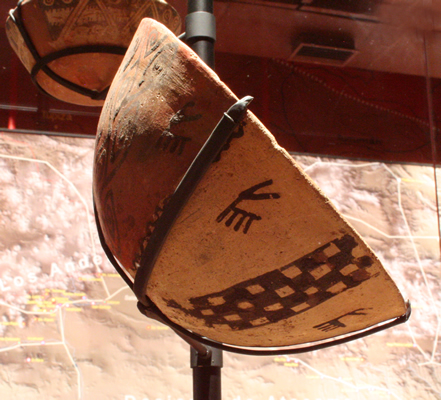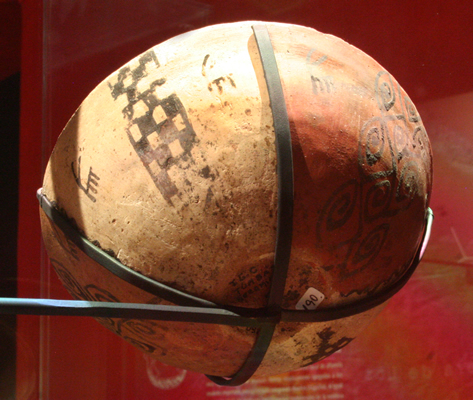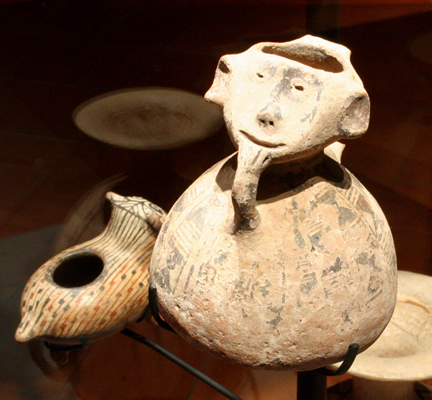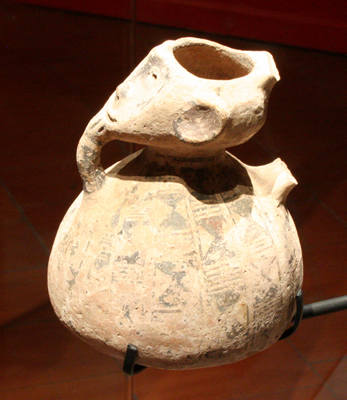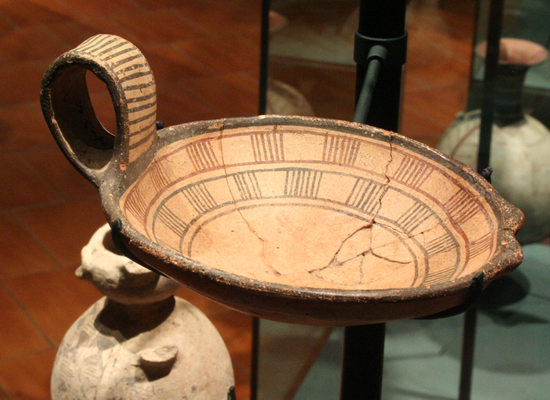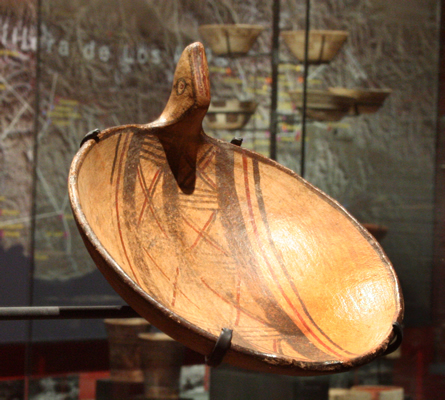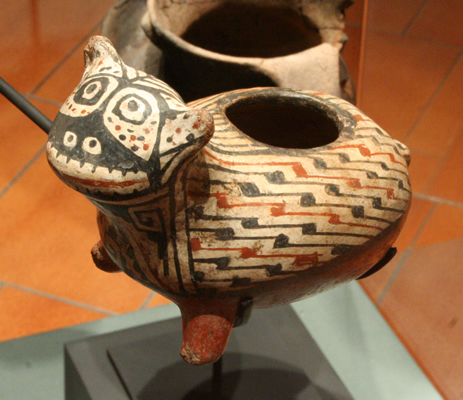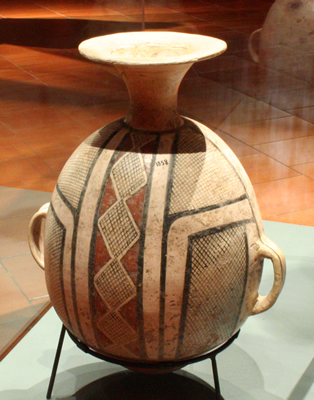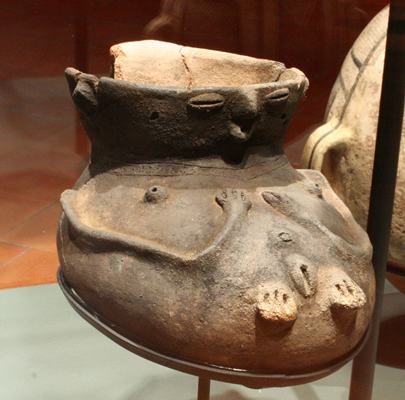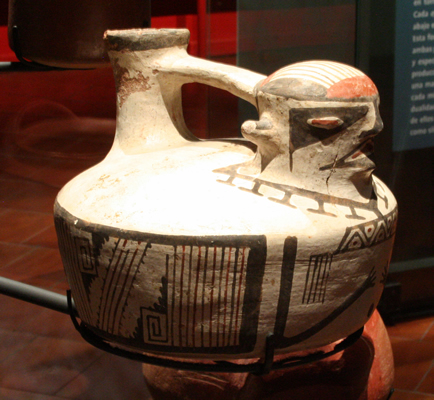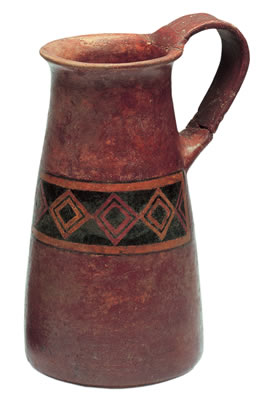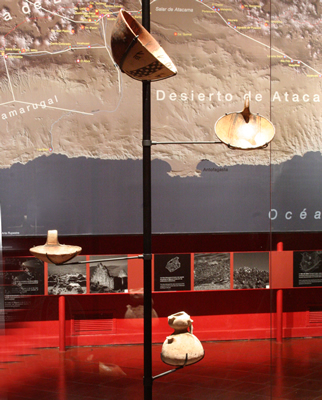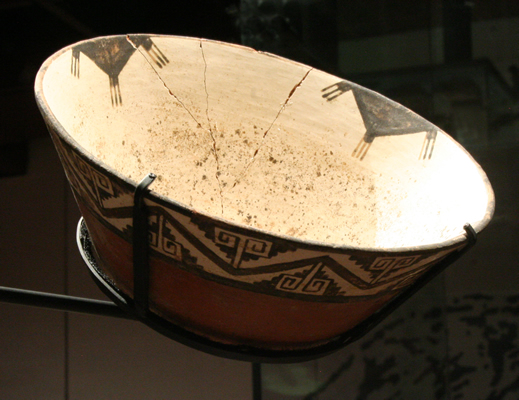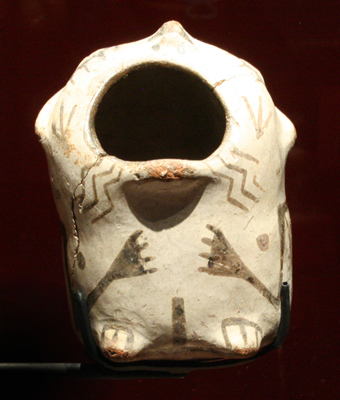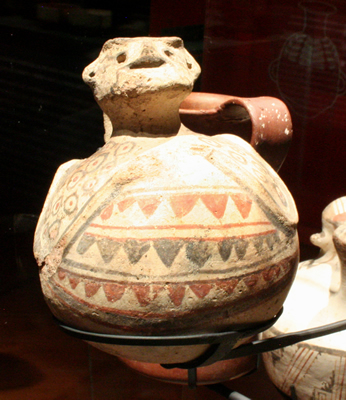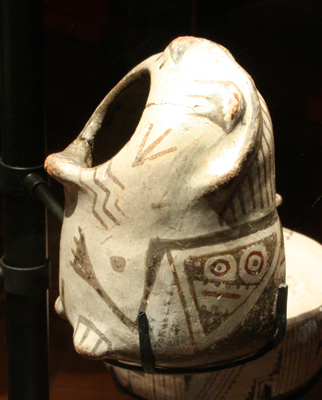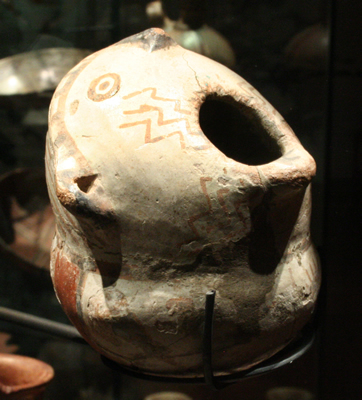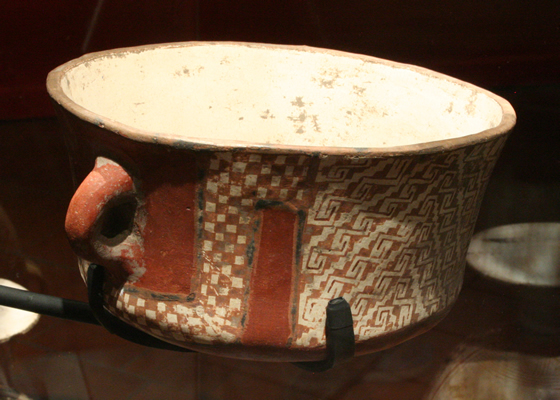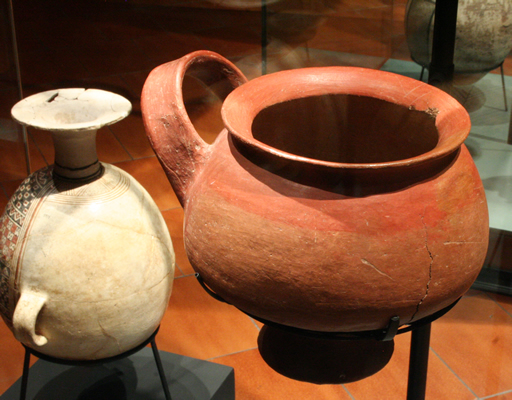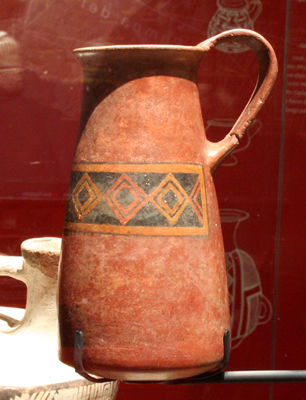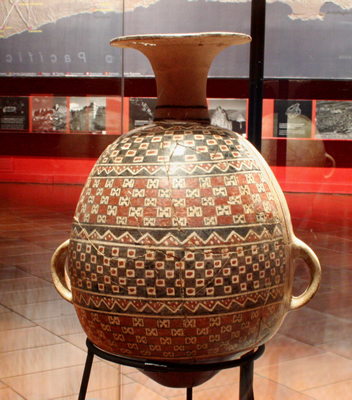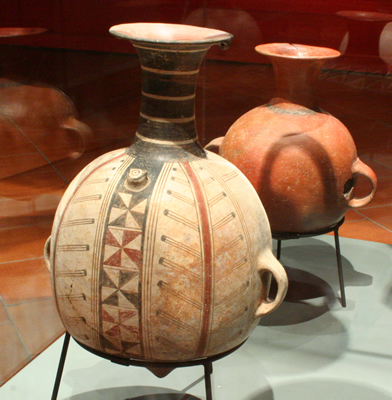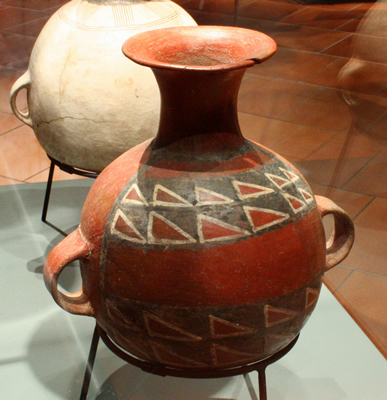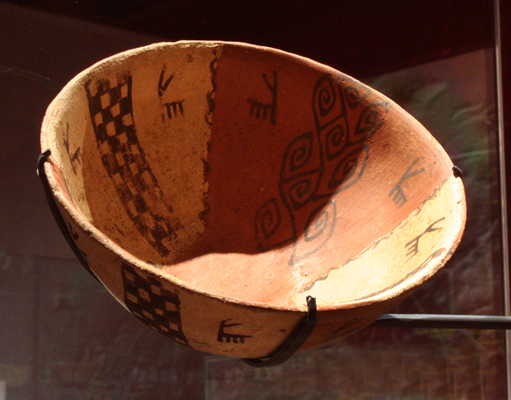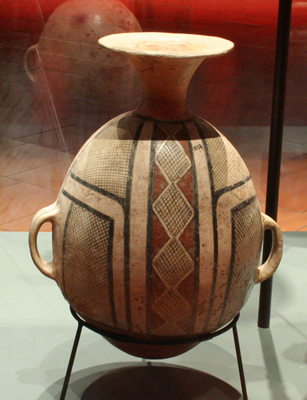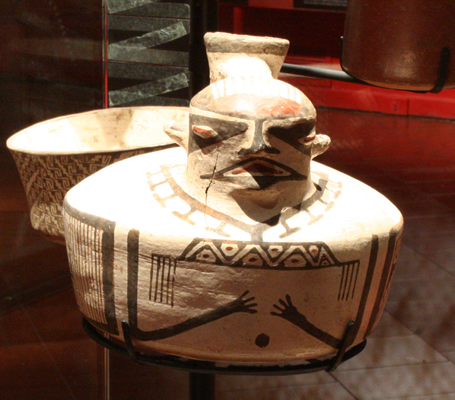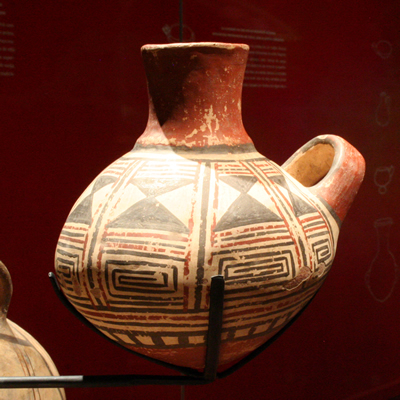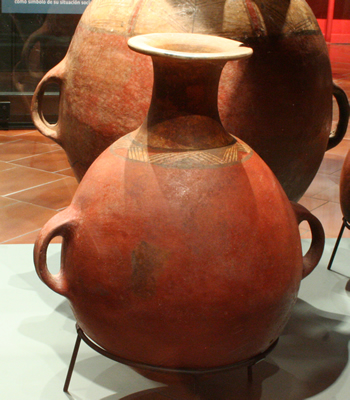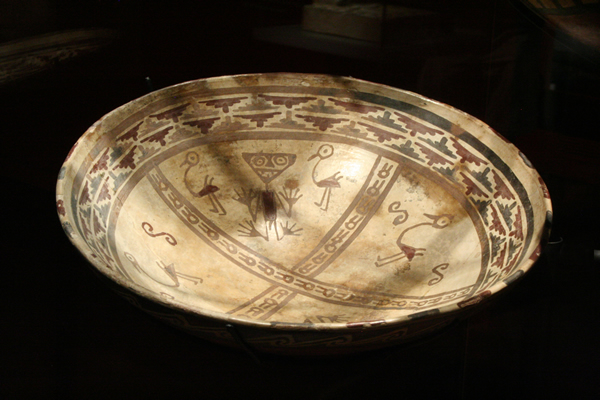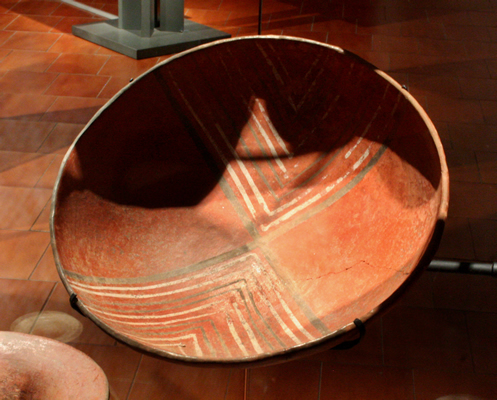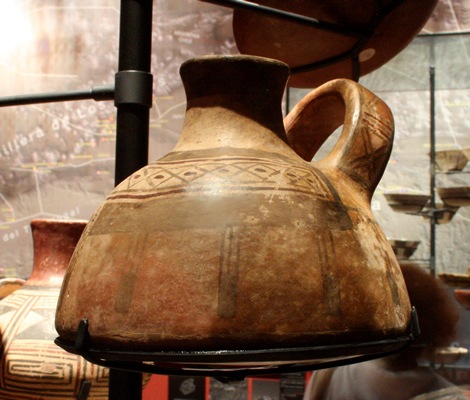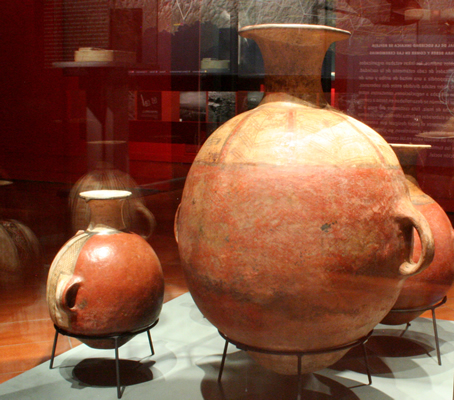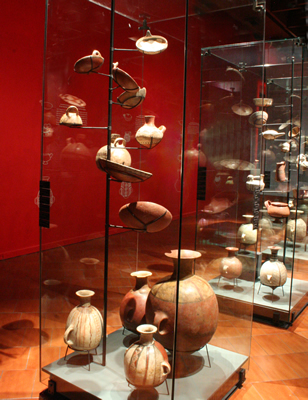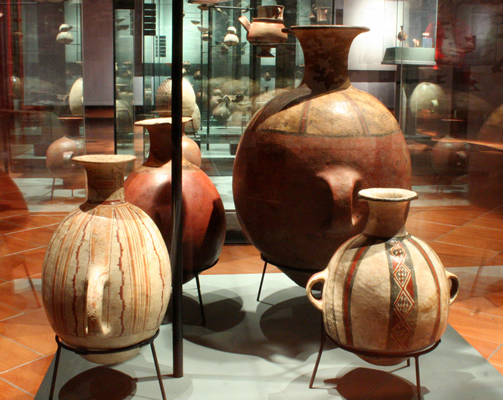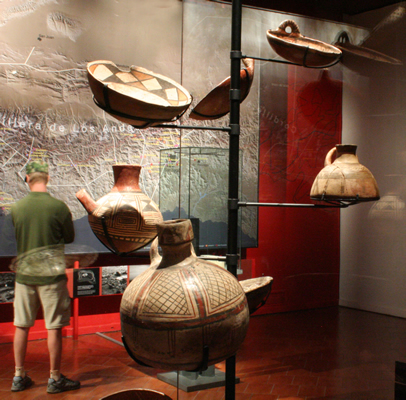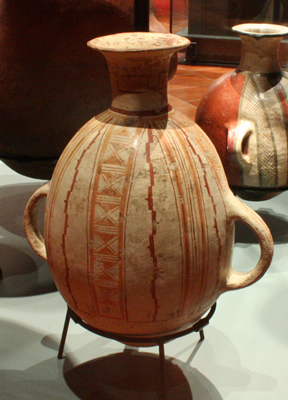The interplay of Inka expansion and the perseverance of local customs was a political game that had an impact on many aspects of both ceremonial and everyday life. A key expression of this is found in the production of Inka-style vessels by the different peoples brought under the control of the Tawantinsuyu (Inka Empire). Although Cuzco ceramics included more than ten different types of vessels, only four of these has been frequently found in Chile: the makas, aisanas, chuas, and mancas. These were the earthenware forms needed for the ceremony associated with the mita, the labor tribute demanded from outlying provinces. The first three types of vessels copied the general Inka shape but incorporated design elements of each local culture. The manca, on the other hand, was a simple undecorated cooking pot that was replicated exactly according to the Inka model. However, mancas were little-used in Cuzco, the seat of Inka power. The point is that the political relationship between local cultures and the Inka State was embodied in the artifacts used at the mita ceremonies.
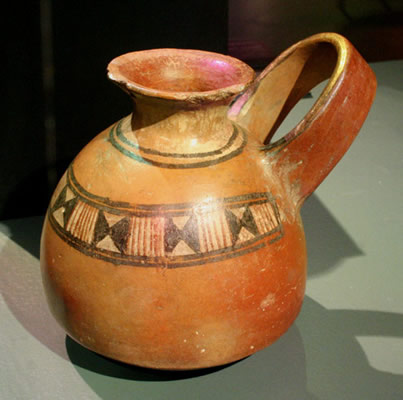
Aisana: Jarro con motivo de “clepsidra”. Cerámica. Inka, Perú. MLP, ML-026716.
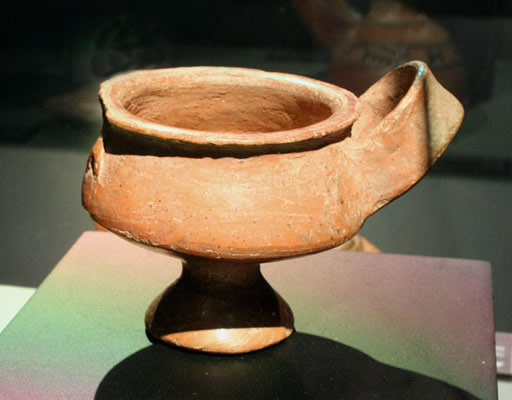
Manca: Olla con pedestal. Cerámica. Inka, Perú. MLP.
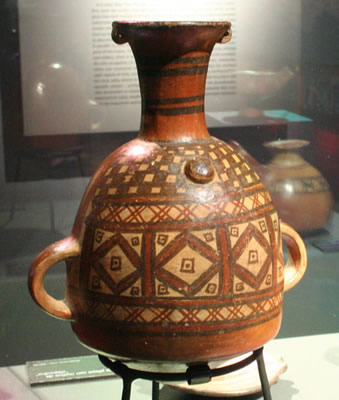
Maka: Cántaro aríbalo con rombos y ajedrezados. Cerámica. Inka, Perú. MLP.
These imperial vessels emphasize that relations between the inka and their subjects were mediated through the prestation of food and drink
Narrow-necked jugs, called aríbalo or maka, were used to transport chicha, a fermented corn beverage, while manca pedestal pots were used for cooking and chua platters were used as serving dishes. This trio comprised the basic set of vessels used by any group related to Tawantinsuyu and residing outside of Cuzco, the Imperial capital. In Chile, the aisana bottle was also used, but on a much more limited basis.
Inka pottery in Arica and Tarapacá reflects relations with the neighboring altiplano
In the extreme north of Chile, in the Arica-Parinacota region and part of Tarapacá, Inka period ceramic vessels were strongly influenced by the pottery decorative traditions of the nearby Altiplano cultures, especially the use of black patterns painted on red-glazed vessels. Specifically, surfaces such as the interior of the chua were often decorated with small representations of camelid animals, almost certainly llamas. Vessels from this region also often followed the classic Inka style very closely, without local ornamentation, perhaps due to closer ties between the empire’s capital and this, one of its nearest provinces.
Potters from the inland Antofagasta region preferred their own esthetic patterns over the inka ones
When it came to copying Inka ceramics, the inland groups that inhabited the Antofagasta region fervently preserved their own traditions. In terms of vessel shapes, some attempt was made to follow the general imperial patterns, but the potters clearly did not go to great lengths to make exact replicas. Most remarkably, the makas, aisanas and chuas were given no decoration whatsoever but were simply painted with the red-purple glaze used on most local ceramics.
Ceramics from Copiapo did not incorporate Cuzco design elements but borrowed from Diaguita styles
Local production of Inka vessels in the valleys of Copiapo and Huasco was most clearly dominated by the Diaguita pottery style . Their designs are often found painted onto Inka style ceramic vessels alongside the usual Cuzco motifs. While producing Inka pottery, however, the total absence of the Copiapo tradition is notorious. Only a few pieces found have displayed a fusion of local ceramics forms from Copiapó culture with Inka or Diaguita desing patterns.
changes in ceramic vessel design reflect the alliance between the Diaguita and Inka cultures
Diaguita ceramics underwent complex changes at the time of the Inka arrival, probably due to the strong alliance forged between these two cultures. The Diaguita potters incorporated many of their traditional designs into the Inka makas, chuas and aisanas while continuing to produce the culture’s traditional ceramic vessels for everyday use, albeit with certain changes in their shapes. It was during the same period that the bell-shaped bowl emerged, a new design unrelated to any previous one made by either society.
Ceramics from Central Chile blended Inka and Diaguita (styles) stylistic patterns, but rarely combined Inka designs with motifs from local tradition
In the Aconcagua and Maipo valleys, local ceramic production under the Inkas followed the general rule of imperial vessels forms, but often combined with major Diaguita decorative patterns.. As in Copiapó, local stylistic patterns were generally not included in Inka vessels. However, just a few local dishes, hemispherical in shape and red in color, do exhibit a combination of local and Inka design principles in their interiors.




































